Nature Rebounds - Trends in America Portend a Global Restoration of Nature
Politics / Environmental Issues Jun 25, 2015 - 03:52 PM GMTBy: John_Mauldin
 The common meme in today’s world is that we are slowly (or perhaps even rapidly in some instances) destroying our global environment. Not just by way of global warming, but pollution, over-farming, water usage, and increasing use of all sorts of resources taken from the ground. Post-apocalyptic movies and books are the rage, showing us living in a world where man has ravaged his environment and our lives have been degraded if not destroyed. Our failure to deal with global warming and the destruction of the environment are key components of the mantra repeated by the mainstream media, pundits, and politicians.
The common meme in today’s world is that we are slowly (or perhaps even rapidly in some instances) destroying our global environment. Not just by way of global warming, but pollution, over-farming, water usage, and increasing use of all sorts of resources taken from the ground. Post-apocalyptic movies and books are the rage, showing us living in a world where man has ravaged his environment and our lives have been degraded if not destroyed. Our failure to deal with global warming and the destruction of the environment are key components of the mantra repeated by the mainstream media, pundits, and politicians.
Technology is supposed to somehow save us from our dystopian future by creating new ways to clean the environment, feed us, and help us become more thrifty and less wasteful. But when? When will we see those breakthroughs, that light at the end of the tunnel?
A few years ago I met Jesse Ausubel, who ran a two-week-long think tank for the US Department of Defense at the Naval War College, tasked with thinking about the challenges of the next 20 years. The Office of Net Assessment brought in 15 futurists from a number of disciplines and personnel from each branch of the military who were the heads of future-scenario planning for their respective branches. We sat for over a week, 10-12 hours a day plus dinners, thinking through the issues we might have to face. Andrew Marshall, who was 93 and had been running that department since he was appointed by Nixon in 1974, gathered this group of nonconsensus thinkers each summer to think about long-range issues. I was fortunate enough to be part of the group for two years.
Jesse corralled this herd of cats into a cogent work group and kept us on track. The experience was exhausting but exhilarating. It was soon clear that Jesse was not only capable of organizing a group of eclectic minds, he was also a first-rate thinker himself, knowledgeable on a wide variety of topics, a true Renaissance man.
Jesse is Director and Senior Research Associate of the Program for the Human Environment at Rockefeller University, a pure-research institution with more Nobel laureates than any other university. The work they do is astounding in its breadth. I recently spent an afternoon with Jesse talking over a number of topics and especially a paper he recently published which lays out serious research in an accessible way on the subject of how things in our beleaguered world might actually be getting better. It is called “Nature Rebounds,” and it’s today’s Outside the Box.
To get the import of this paper, you may need to know more about who Jesse is. You can read his wiki bio, which is extensive; but the short version is that he was integral to setting up the first (and then subsequent) conferences on climate change in Geneva in 1979. Later, he led the Climate Task of the Resources and Environment Program of the International Institute for Applied Systems Analysis, near Vienna, Austria, an East-West think tank created by the US and Soviet academies of sciences. Beginning with a 1989 book called Technology and Environment, Jesse was one of the founders of the field of industrial ecology. He also co-developed the concepts of decarbonization and dematerialization. He has more serious science attached to his name than most climate and ecological scientists do, and he has the awards and honors to prove it.
And what Jesse tells us is that for much of the world, in many ways, things are getting better. Nature is winning. Not everywhere, of course, and he documents the downside as well, notably the serious devastation of our oceans and fishing. There is still a lot to do, but the trends are positive (except, notably, for the oceans). He shows us that the effort to clean up the environment and expand the areas that are allowed to return to a more natural state has been worth it. This is a great summer read. The entire paper is included in today’s OTB, but if you would like to read it in its original format, you can download a PDF here.
I was recently in the wilds of New Hampshire and Vermont. I spent the weekend at the fabulous retreat compound of Gary Bahre, where some 15 people involved in his investments and businesses listened to Mark Faber, David Rosenberg, Ed Yardeni, Danny (David) Blanchflower, Peter Boockvar, Gary Shilling, and your humble analyst present and debate a series of economic topics. Trish Regan, now with Fox Business, moderated, kept things moving along, and displayed a very wide breadth of knowledge in her questioning. Those who know the characters involved will know that the event was, of course, cordial but also rather highly spirited. The theme song should have been “Hit Me With Your Best Shot!” I don’t get to be in many small group sessions like that, and I thoroughly enjoyed myself. My special thanks to Gary for being such a fabulous host. The place is now for sale, and I wish him the best, although I really would like to be a part of another conference like that again.
I have now moved to my temporary home base in the NoHo neighborhood of NYC, where I’ll be through mid-July, in an apartment provided courtesy of AirBnB (I think). I have a business reason to be here, but on a personal level I have always wanted to spend an extended time in NYC. There is just so much to do and so many friends here. Randomly, I find myself in the same building with Nouriel Roubini. We’ve already scheduled to meet up in the next few days.
As a quick aside before hitting the send button, I was pleasantly surprised to find my photo in the New York Times. As I mentioned last week, I attended a small meeting with Governor Bobby Jindal. I wasn’t paying attention to whom the photographers were shooting as I talked with the governor. Somebody was evidently there to cover the event. New York has the potential for a lot of interesting dinners.
You have a great week.
Your happy to see the world getting better analyst,
John Mauldin, Editor
Outside the Boxsubscribers@mauldineconomics.com
Nature Rebounds
Jesse H. Ausubel
Director, Program for the Human Environment
The Rockefeller University
Long Now Foundation Seminar
San Francisco
Trends in America may portend a global restoration of nature, a rebound. To understand, let’s go into the woods, not in a far-off kingdom, but only about 45 miles northwest of New York City in New Jersey, where a scary side-effect illustrates the American trend to expand nature. In September 2014 a bear killed Darsh Patel, 22, a senior at Rutgers University majoring in information technology, while hiking with friends. Patel’s death in the Apshawa Preserve was the first fatal bear attack recorded in New Jersey in 150 years. Five friends were hiking when they came across the bear, which they photographed and filmed before running in different directions. After regrouping, they noticed one was missing. State authorities found and euthanized the bear, which had human remains in its stomach and esophagus, and human blood and tissue below its claws.
Five years earlier, the state of New Jersey had restored its bear hunt. In 2010 wildlife ecologists estimated that 3,400 bears were living in New Jersey. After five years of hunting, the experts now estimate the population has fallen to 2,500. During the six-day 2014 season, hunters killed 267 bears. Protesters have picketed and petitioned to stop the annual hunt.
Should the re-wilding of New Jersey shock us? I answer “no,” because about 1970 a great reversal began in America’s use of resources. Contrary to the expectations of many professors and preachers, America began to spare more resources for the rest of nature, first in relative and more recently in absolute amounts. A series of decouplings is occurring, so that our economy no longer advances in tandem with exploitation of land, forests, water, and minerals. American use of almost everything except information seems to be peaking, not because the resources are exhausted, but because consumers changed consumption and producers changed production. Changes in behavior and technology liberate the environment.
Farms
Consider first land. Agriculture has always been the greatest raper of nature, stripping and simplifying and regimenting it, and reducing acreage left. Then, in America, in about 1940 acreage and yield decoupled (Figure 1). Since about 1940 American farmers have quintupled corn while using the same or even less land. Corn matters because it towers over other crops, totaling more tons than wheat, soy, rice, and potatoes together (Figure 2).
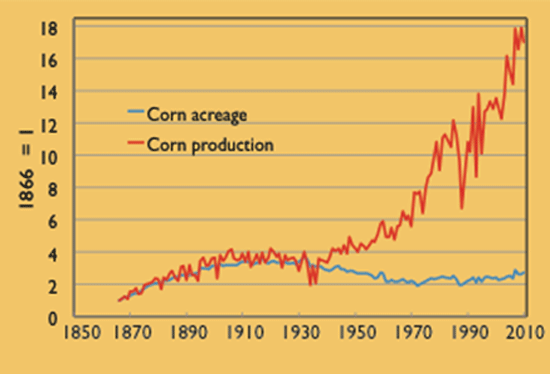
Figure 1. Decoupling of US corn production from area farmed.
Data source: US Census Bureau (1975, 2012).
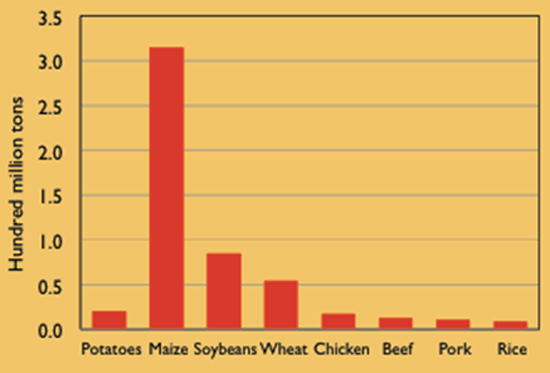
Figure 2. Domination by corn of US crops and meats produced in 2011.
Data sources: USDA; US Census Bureau.
Crucially, rising yields have not required more tons of fertilizer or other inputs. The inputs to agriculture have plateaued and then fallen, not just cropland but nitrogen, phosphates, potash, and even water (Figure 3). A recent meta-analysis by Wilhelm Klümper and Matin Qaim of 147 original studies of recent trends in high-yield farming for soy, maize, and cotton, funded by the German government and the European Union, found a 37 percent decline in chemical pesticide use while crop yields rose 22 percent. The story is precision agriculture, in which we use more bits, not more kilowatts or gallons.
Importantly, the average yield of American farmers is nowhere near a ceiling. In 2013, David Hula, a farmer in Virginia, not Iowa or Illinois, grew a US and probably world record 454 bushels of corn per acre, three times the average yield in Iowa. His tractor cab is instrumented like the office of a high-speed Wall Street trader. In 2014 famer Hula’s harvest rose 5 percent higher to 476 bushels, while Randy Dowdy, who farms near Valdosta, Georgia, busted the 500 bushel wall with a yield of 503 bushels per acre and won the National Corn Growers Contest.
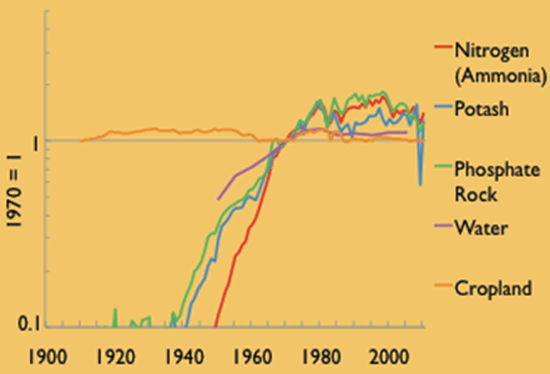
Figure 3. The transition to precision agriculture. Absolute US consumption of five agricultural inputs.
Data source: USGS2013.
Now one can ask if Americans need all that corn. We eat only a small fraction of corn on the cob or creamed or as tortillas or polenta. Most corn becomes beef or pork, and increasingly we feed it to cars (see Figure 4). An area the size of Iowa or Alabama grows corn to fuel vehicles.
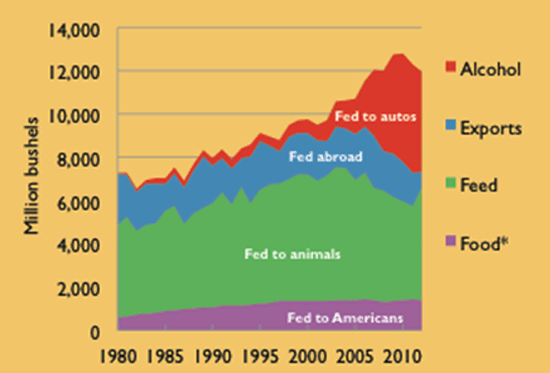
Figure 4. US uses of corn. *Note: Includes production of high-fructose corn syrup,
glucose and dextrose, starch, alcohol for beverages and manufacturing,
seed, cereals, and other products.
Data source: USDA Economic Research Service.
Unlike corn that becomes beef or soybeans that become chicken, potatoes stay potatoes, and they conserve the scarce input of water in Idaho or California’s Kern County around Bakersfield. Ponder the rewards of success for the potato grower (Figure 5). Potato growers have also lifted yields, but their markets are saturated, so they remove land from production. This sparing of land—and water— is a gift for other plants and animals.
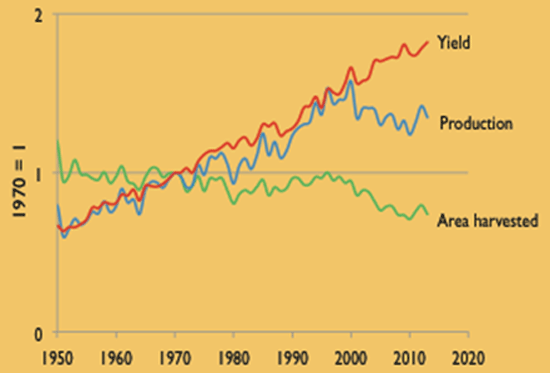
Figure 5. Sparing of land by potato growers: US potato yield, production,
and harvested area.
Data source: USDA 2013.
Steadily, the conversion of crops, mostly corn, to meat, has also decoupled, because the meat game is also one in which efficiency matters. From humanity’s point of view, cattle, pigs, and chickens are machines to make meat. A steer gets about 12 miles per gallon, a pig 40, and a chicken 60. Statistics for America and the world show that poultry, land’s efficient meat machines, are winning (Figure 6).
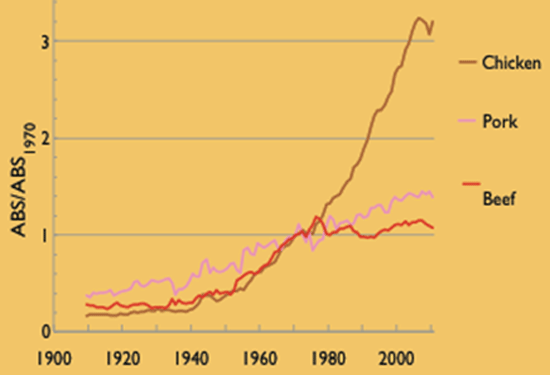
Figure 6. Chicken wins market share in US meat consumption.
Data source: USDA.
High grain and cereal yields and efficient meat machines combine to spare land for nature. In fact, we have argued that both the USA and the world are at peak farmland, not because of exhaustion of arable land, but because farmers are wildly successful in producing protein and calories. To prosper, farmers have allowed or forced Americans to eat hamburgers and chicken tenders, drink bourbon, and drive with ethanol, and they have still exported massive tonnages abroad.
Wasted food is not decoupled from acreage. When we consider the horror of food waste, not to mention obesity, then we further appreciate that huge amounts of land can be released from agriculture with no damage to human diet. Every year 1.3 billion tons of food are thrown away globally, according to a 2013 report of the Food and Agriculture Organization of the UN. That equates to one-third of the world’s food being wasted.
Some food waste results from carelessness, but laws and rules regulating food distribution also cause it. Germany, the UK, and other countries are changing rules to reduce food waste. In California the website Food Cowboy uses mobile technology to route surplus food from wholesalers and restaurants to food banks and soup kitchens instead of to landfills, and CropMobster tries to spread news about local food excess and surplus from any supplier in the food chain and prevent food waste. The 800 million or so hungry humans worldwide are not hungry because of inadequate production.
If we keep lifting average yields toward the demonstrated levels of David Hula and Randy Dowdy, stop feeding corn to cars, restrain our diets lightly, and reduce waste, then an area the size of India or the USA east of the Mississippi could be released globally from agriculture over the next 50 years or so (Figure 7).

Figure 7. Peak farmland? Global arable land 1961– 2009 and projections to 2060.
In the alternative scenario, the several favors (rising yields, diet, waste reduction,
cessation of using land to fuel cars) sum to a higher total.
Rebound is already happening. Abandonment of marginal agricultural lands in the former Soviet Union and Eastern Europe has released at least 30 million hectares and possibly as much as 60 million hectares to return to nature according to careful studies by geographer Florian Schierhorn and his colleagues. Thirty million hectares is the size of Poland or Italy. The great reversal of land use that I am describing is not only a forecast, it is a present reality in Russia and Poland as well as Pennsylvania and Michigan. I will discuss some consequences of this reversal later.
In America alone the total amount of corn fed to cars grows on an area equal to Iowa or Alabama, as mentioned. Think of organizations like the Long Now Foundation turning all those lands that are now pasture for cars into refuges for wildlife, carbon orchards, and parks. The area is about twice the area of all the US national parks outside Alaska.
Forests
Let’s now turn from farms to forests. Foresters refer to a “forest transition” when a nation goes from losing to gaining forested area. France recorded the first forest transition, about 1830. Since that time French forests have doubled while the French population has also doubled. Forest loss decoupled from population.
Measured by growing stock, the USA enjoyed its forest transition around 1950, and measured by area, about 1990. In the USA, the forest transition began around 1900, when states such as Connecticut had almost no forest, and now encompasses dozens of states. The thick green cover of New England, Pennsylvania, and New York today would be unrecognizable to Teddy Roosevelt, who knew them as wheat fields, pastures mown by sheep, and hillsides denuded by logging.
The forest transition, like peak farmland, involves forces of both supply and demand. Foresters manage the supply better through smarter harvesting and replanting. Simply shifting from harvesting in cool slow-growing forests to warmer faster-growing ones can make a difference. A hectare of cool US forest adds about 3.6 cubic meters of wood per year, while a hectare of warm US forest adds 7.4. A shift in the USA harvest between 1976 and 2001 from cool regions to the warm Southeast decreased logged area from 17.8 to 14.7 million hectares, a decrease of 3.1 million hectares, far more than either the 0.9 million hectares of Yellowstone Park or 1.3 million of Connecticut.
Like farmed meat, forest plantations also produce wood more efficiently than unmanaged forests, and forest plantations meet a growing fraction of demand, predictably, and spare other forests for biodiversity and other benefits. The growth in plantations versus natural forests provides even greater contrast than the warm versus cool forests. Brazilian eucalyptus plantations annually provide 40 cubic meters of timber per hectare, about five times the production of a warm natural forest and almost 10 times that of a cool northern forest. In recent times about a third of wood production comes from plantations. If that were to rise to 75 percent, the logged area of natural forests could drop by half. It is easy to appreciate that if plantations merely grow twice as fast as natural forests, harvesting one hectare of plantation spares two hectares of natural forest.
An equally important story unfolds on the demand side. We once used wood to heat our homes and for almost forgotten uses such as railroad ties. The Iron Horse was actually a wooden horse—its rails rested on countless trees that made the ties and trestles. The trains themselves were wooden carriages. As president of the Southern Pacific and Central Pacific railroads in their largest expansion, Leland Stanford was probably one of the greatest deforesters in world history. It is not surprising that he publicly advocated for conservation of forests because he knew how railroads cut them. The US Forest Service originated around 1900 in large part owing to an expected timber famine caused by expansion of railroads.
Fortunately for nature the length of the rail system saturated, creosote preserved timber longer, and concrete replaced it. Charting the three major uses of wood—fuel, construction, and paper—shows how wood for fuel and building has lost importance since 1960 (Figure 8). World production has also saturated (Figure 9). Paper had been gliding upward but, after decades of wrong forecasts of the paperless society, we must now credit West Coast tycoons Steve Jobs and Jeff Bezos for e-readers and tablets, which have caused the market for pulp and paper, the last strong sector of wood products, to crumple. Where are the newsstands and stationers of yesteryear? Many paper products, such as steno pads and even fanfold computer paper, are artifacts for the technology museums. E-mail has collapsed snail mail. US first-class mail fell a quarter in just the five years between 2007 and 2012 (Figure 10). As a Rockefeller University employee, I like to point out that John D. Rockefeller saved whales by replacing sperm oil with petroleum. ARPANET and the innovators of e-mail merit a medal for forest rebound.
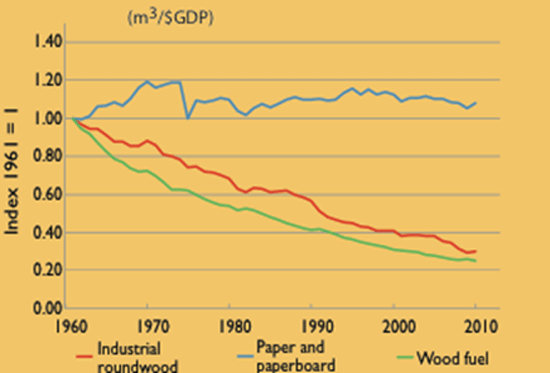
Figure 8. Declining favor of wood products:
Global forest products consumed per dollar of GDP.
Data sources: FAO 2013; World Bank 2012.
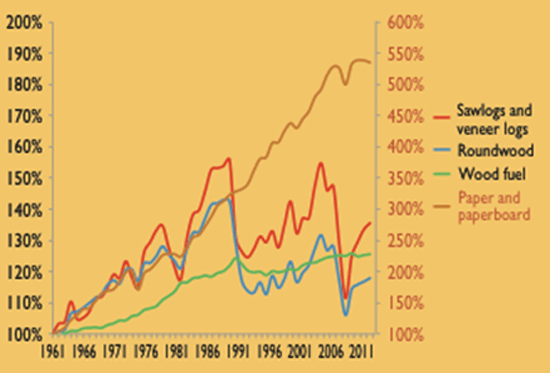
Figure 9. Saturation of world production of forest products, in tons; 1961 = 100%.
Data source: UN FAOSTAT.
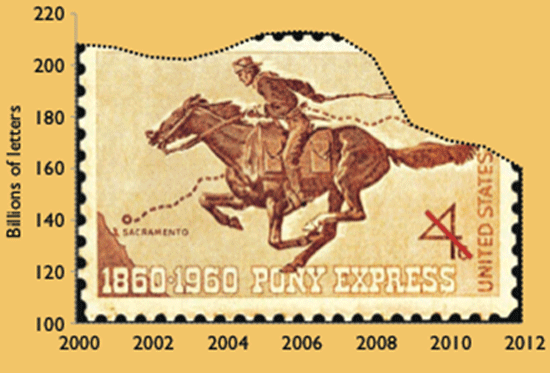
Figure 10. Dematerialization in action: Falling US mail volume.
Data source: US Postal Service.
Global greening
So far I have described bottom-up forces relating to farms and forests that spare land. Top-down forces are also at work, and together the forces are causing global greening, the most important ecological trend on Earth today. The biosphere on land is getting bigger, year by year, by 2 billion tons or even more.
Researchers are reporting the evidence weekly in papers ranging from arid Australia and Africa to moist Germany and the northernmost woods (see text box, below). Probably the most obvious reason is the increase of the greenhouse gas carbon dioxide in the atmosphere. In fact, farmers pump CO2 into greenhouses to make plants grow better. Carbon dioxide is what many plants inhale to feel good. It also enables plants to grow more while using the same or less water.
Californians David Keeling and Ralph Keeling have kept superfine measurements of CO2 since 1958. The increasing size of the seasonal cycle from winter when the biosphere releases CO2 to the summer when it absorbs the gas proves there is greater growth on average each year. The increased CO2 is a global phenomenon, potentially enlarging the biosphere in many regions.
In some areas, especially the high latitudes of the Northern Hemisphere, the growing season has lengthened, attributed to global warming. The longer growing season is also causing more plant growth, demonstrated most convincingly in Finland. Some regions, including sub-Saharan Africa, report more rain and more growth.
More nitrogen here and there in the environment may also be causing global greening. A group of us led by Pekka Kauppi of Finland is trying to dissect the shares attributable to the various factors.
In any case, the numbers are huge, and satellite comparisons of the biosphere in 1982 and 2011 by Ranga Myneni and his colleagues show little browning and vast green expanses of greater vegetation (Figure 11). I repeat that global greening is the most important ecological phenomenon on land today.
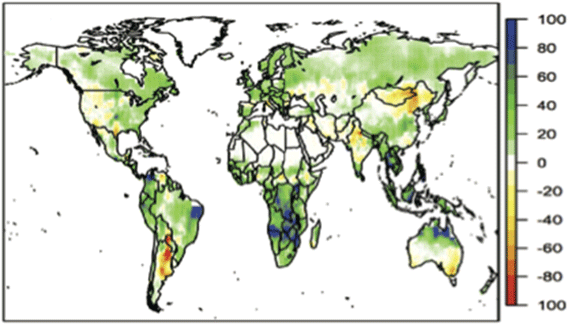
Figure 11. Global greening: Corroborating satellite images, models simulate greening
1990–2011 with growing net primary production spanning tropical, temperate,
and boreal regions and all vegetation types but also of course some areas with losses.
Trend is measured in grams of carbon per square meter per year.
Source: Sitch et al. 2015, fig. 6.
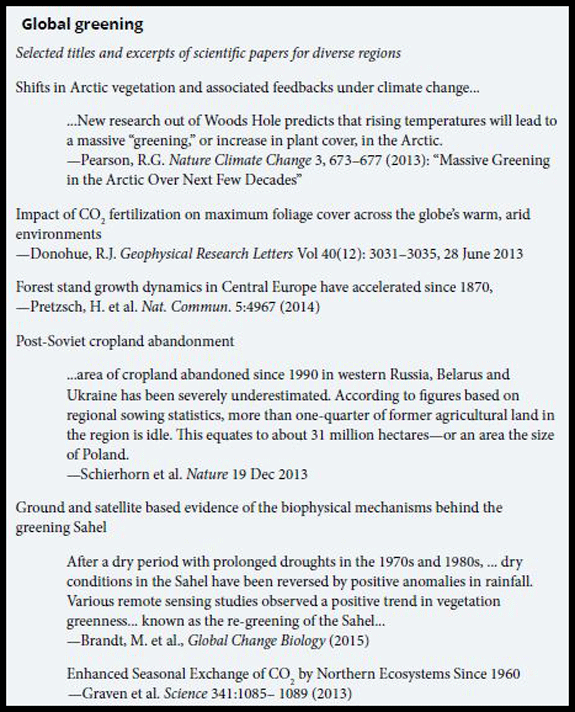
Materials
In speaking about land, I have occasionally mentioned materials such as nitrogen and water. Let me now suggest that in addition to peak farmland and peak timber, America may also be experiencing peak use of many other resources. Back in the 1970s, we thought America’s growing appetite might exhaust Earth’s crust of just about every metal and mineral. But a surprising thing happened, even as our population kept growing. The intensity of use of the resources began to fall. For each new dollar in the economy, we used less copper and steel than we had used before. Figure 12 shows not just the relative but the absolute use of nine basic commodities, flat or falling for about 20 years. In the 1967 film The Graduate, a successful businessman tells the new college graduate played by Dustin Hoffman, “I just want to say one word to you. Just one word. Plastics” (https://www.youtube.com/watch?v=PSxihhBzCjk). About 1990, Americans began even to use less plastic. America has started to dematerialize.
The reversal in use of some of the materials so surprised me that Iddo Wernick, Paul Waggoner, and I undertook a detailed study of the use of 100 commodities in the USA from 1900 to 2010. One hundred commodities span just about everything from arsenic and asbestos to water and zinc. The soaring use of many up to about 1970 makes it easy to understand why Americans started Earth Day in that year. I marched.
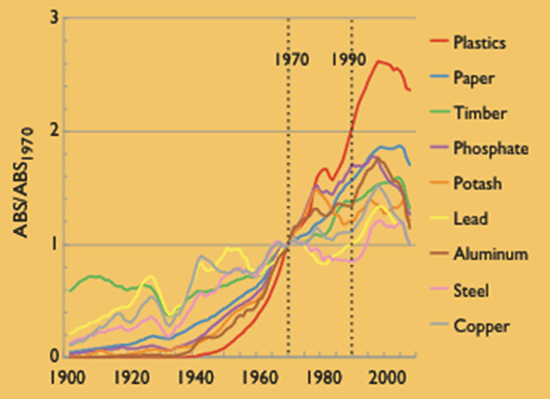
Figure 12. Use of nine basic commodities, US 1900–2010.
Note: Uses five-year moving average; legend is ordered top- down by value in 2010.
Data source: USGS National Minerals Information Center 2013.
Of the 100 commodities, we found that 36 have peaked in absolute use; Figure 13 shows a selection of these. Good riddance to asbestos and cadmium. Figure 14 shows some of the 53 commodities we consider poised to fall. These include not only cropland and nitrogen, which I have discussed, but even electricity and water, about which more soon.
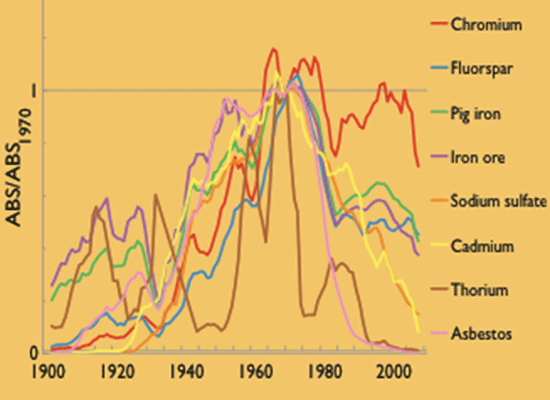
Figure 13. Absolute use of peaked commodities, US 1900–2010.
Note: Uses five-year moving average; legend is ordered top-down by value in 2010.
Data source: USGS National Minerals Information Center 2013.

Figure 14. Absolute use of likely peaking commodities, US 1900–2010.
Note: Uses five-year moving average; legend is ordered top- down by value in 2010.
Data source: USGS National Minerals Information Center 2013.
Only 11 of the 100 commodities are still growing in both relative and absolute use in America. These include chickens, the winning form of meat. Several others are elemental vitamins, like the gallium and indium used to dope or alloy other bulk materials and make them smarter. We have titled our forthcoming report “Chickens and Gallium.”
Dematerialization is no surprise to San Franciscans, who make the devices that replace the big old clumsy hunks of metal and blobs of plastic pictured on the right in Figure 15.

Figure 15. The smart phone as dematerializer, one small device replacing many larger ones.
Credit: M. Tupy 2012.
Even Californians economizing on water in the midst of a drought may be surprised at what has happened to water withdrawals in America since 1970. Expert projections made in the 1970s sprayed rising water use to the year 2000, but what actually happened was a leveling off. While America added 80 million people, the population of Turkey, American water use stayed flat. In fact, as Figure 16 reports, data through 2010 just released by the US Geological Survey shows water use has now declined below the level of 1970, while production of corn, for example, has tripled. The largest reasons are more efficient water use in farming and power generation.
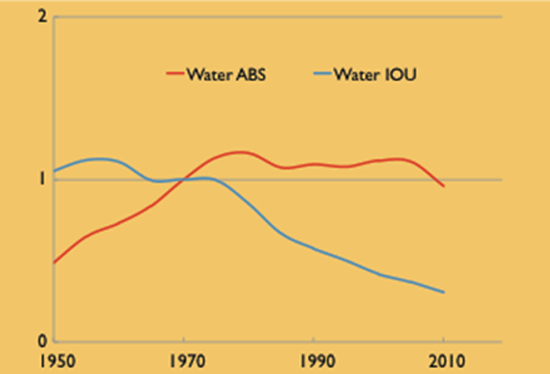
Figure 16. Total US water withdrawals: absolute (ABS) and relative to GDP (IOU).
Withdrawals have been flat since about 1975 while production of corn
and soybeans has grown 300%, wheat 60%, potatoes 25%.
Data sources: USGS 2013; Williamson 2014.
In the land of Lyft and Uber, I must speak about petroleum and mobility too. Until about 1970, per American petroleum use rose alarmingly. Most experts worried about further rises, but Figure 17 shows what actually happened—plateau and then fall. Partly vehicles have become more efficient. But partly, travel in personal vehicles seems to have saturated. America may be at peak car travel. If you buy an extra car, it is probably for fashion or flexibility. You won’t spend more minutes per day driving or drive more miles.
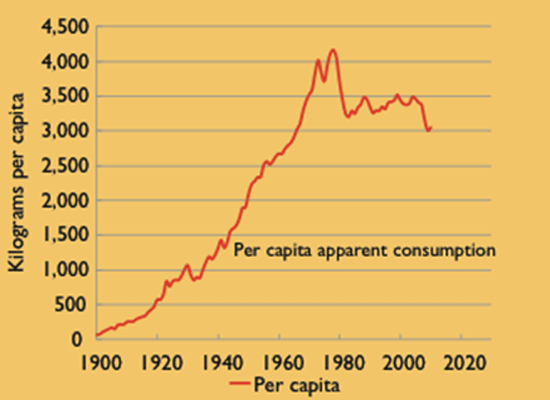
Figure 17. Rise, saturation, and decline of US per capita petroleum consumption,
1900– 2012.
Unlike the car companies, I would not bet on selling a lot more cars either. The beginning of a plateau in the population of cars and light trucks on US roads suggests we are approaching peak car. The reason may be that drone taxis will win. The average personal vehicle motors about an hour per day, while a car shared like a Zip Car gets used eight or nine hours per day, and a taxi even more. As venture capitalists here know, driverless cars can work tirelessly and safely and accomplish the present mileage with fewer vehicles. The manufacturers won’t like it, but markets do simply fade away, whether for typewriters or newsprint.
Moreover, new forms of transport can enter the game. According to our studies, the best bet is on magnetically levitated systems, or maglevs, “trains” with magnetic suspension and propulsion. Elon Musk has proposed a variant called the hyperloop that would speed between LA and San Francisco at about 1000 kilometers per hour, accomplishing the trip in about 35 minutes and thus comfortably allowing daily round trips, if the local arrangements are also quick.
The maglev is a vehicle without wings, wheels, and motor, and thus without combustibles aboard. Suspended magnetically between two guard rails that resemble an open stator of an electric motor, it can be propelled by a magnetic field that, let’s say, runs in front and drags it.
Hard limits to the possible speed of maglevs do not exist, above all if the maglev runs in an evacuated tunnel or surface tube. Evacuated means simulating the low pressure that an airplane encounters at 30–50 thousand feet of altitude. Tunnels solve the problem of permanent landscape disturbance, but tubes mounted above existing rights of way of roads or rails might prove easier and cheaper to build and maintain.
Spared a motor and the belly fat called fuel, the maglev could break the “rule of the ton,” the weight rule that has burdened mobility. The weight of a horse and its gear, a train per passenger, an auto that on average carries little more than one passenger, and a jumbo jet at takeoff all average about one ton of vehicle per passenger. The maglev could slim to 300 kilograms, dropping directly and drastically the cost of energy transport.
Will maglevs make us sprawl? This is a legitimate fear. In Europe, since 1950 the tripling of the average speed of travel has extended personal area tenfold, and so Europe begins to resemble Los Angeles. In contrast to the car, maglevs may offer the alternative of a bimodal or “virtual” city with pedestrian islands and fast connections between them. Maglevs can function as national and continental-scale metros, at jet speed.
Looking far into the 21st century, we can imagine a system as wondrous to today’s innovators as our full realization of cars and paved roads would seem to the maker of the Stutz Bearcat. Because the maglev system is a set of magnetic bubbles moving under the control of a central computer, what we put inside is immaterial. It could be a personal or small collective vehicle, starting as an elevator in a skyscraper, becoming a taxi in the maglev network, and again becoming an elevator in another skyscraper. The entire bazaar could be run as a videogame where shuffling and rerouting would lead the vehicle to its destination swiftly, following the model of the Internet. In the end, a maglev system is a common carrier or highway, meaning private as well as mass vehicles can shoot through it.
The city air can be clean, too, if the source of electricity is clean. In fact, Americans have been doing a good job of decoupling growth and air quality. We already see not only decoupling but absolute falls in pollution. Emissions of sulfur dioxide (Figure 18), a classic air pollutant, peaked about 1970 because of a blend of factors including better technology and stronger regulation. The arc of sulfur dioxide forms a classic curve in which pollution grew for a while as Americans grew richer but then fell as Americans grew richer still and preferred clean air.
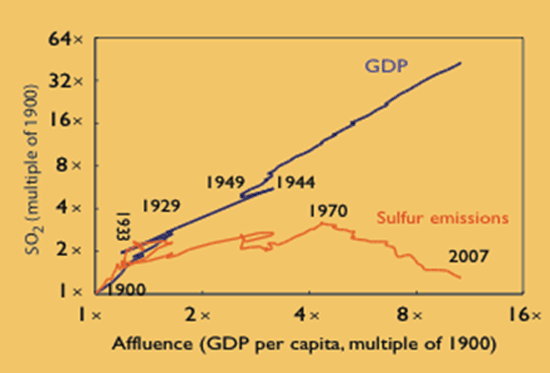
Figure 18. Decoupling of US economic growth and sulfur dioxide emissions.
Note: the orange Environmental Kuznets Curve of sulfur emissions,
which peaked in 1970,contrasts with the blue straight line of growth of GDP.
Economic slumps as in 1929 and 1944 reverse growth for 5–10 years
but do not affect the longer-term trends for GDP or emissions.
Data source: EPA. Credit: Waggoner and Ausubel 2009.
American emissions of carbon dioxide (Figure 19) now similarly appear to be peaking. The data in the figure go through only 2007 while emissions have dropped since then to 1990 levels. These trajectories seem preset, not created by public policy or politicians. As the German politician Bismarck said in a speech in 1895, a statesman does not create the stream, he floats on it and tries to steer. In California terms, the best politicians are surfers, winning attention for riding waves.
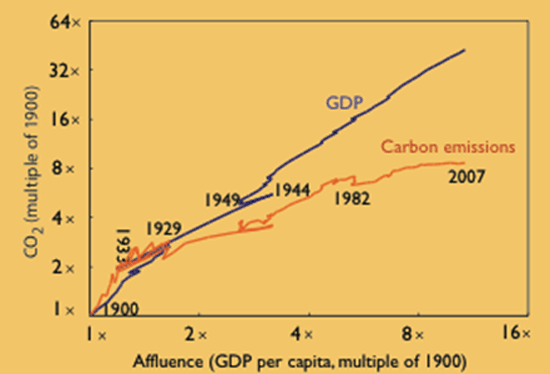
Figure 19. Decoupling of US economy and carbon dioxide emissions.
2013 emissions were 10% below 2007. Carbon emissions seem around their peak,
especially by analogy with sulfur emissions.
Data sources: Carbon Dioxide Information Analysis Center, EPA. Credit: Waggoner and Ausubel 2009.
Population
I have spoken about farms, forests, materials including water, and mobility. Let me report briefly on human population as well. The US fertility rate declined six years in a row beginning in 2008, falling to 1.86 births per woman in 2013, well below the replacement level of 2.1. Immigration will continue to keep the US population growing, but globally it appears that Earth is passing peak child (Figure 20). Swedish statistician and physician Hans Rosling estimates that the absolute number of humans born reached about 130 million in 1990 and has stayed around that number since then. With fertility declining all over the world, the number of newcomers should soon fall. While momentum and greater longevity will keep the total population growing, technical progress can counter the likely mouths. A 2 percent annual gain in efficiency can dominate a growth of population at 1 percent or even less.
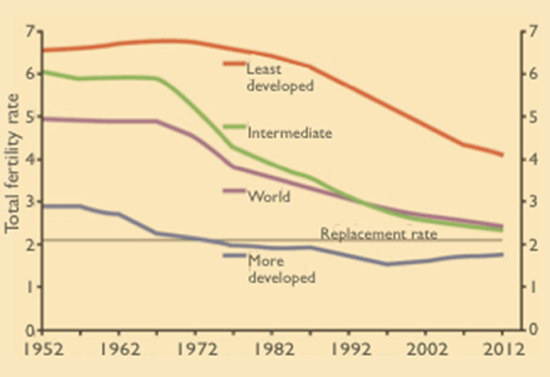
Figure 20. Peak child? Population growth slowing at all levels of development.
Source: The European Financial Review 2013.
Oceans
If only everything were trending in the right direction. I explore and observe the oceans a lot, and ocean life is getting a raw deal. Let’s think a bit about the form of meat called fish. Consider the change in the catch of a charter boat out of Key West between 1958 and 2007—no more large groupers (Figure 21). Or take a trip to the Tokyo fish market. Sea life is astonishingly delicious, and tastier and more varied in markets than ever, owing to improved storage and transport. An octopus from Mauretania ends in Japan.
Before the advent of refrigeration, fresh sushi was a delicacy for the emperor of Japan. In January 2013 a 489-pound bluefin sold for $1.76 million. We may say that the democratization of sushi has changed everything for sea life.
Fish biomass in intensively exploited fisheries appears to be about one-tenth the level of the fish in those seas a few decades or hundred years ago. Diverse observations support this estimate. For example, the total population of cod off Cape Cod today probably weighs only about 3 percent of all the cod in 1815. The average swordfish harpooned off New England dropped in size from about 500 pounds in 1860 to about 200 pounds in 1930. To survive wild in the ocean, an unprotected species needs to enjoy juvenile sex and spawn before capture.
Earlier I spoke about land meat. How does world consumption of fish that depletes the oceans compare with the 800 million tons of animal products humanity eats? Fish meat is about one-fifth of land meat. In 2012 about 90 million tons of fish were taken wild from salt and fresh water and a fast-growing 66 million tons from fish farms and ranches.
Americans in fact eat relatively little sea life, only about 7 kilograms per person in a year. Much of that 7 kilograms, however, is taken from the wild schools of the sea, and that fraction of total diet, though small, depletes the oceans. The ancient sparing of land animals by farming shows us how to spare the fish in the sea. If we want to eat sea life, we need to increase the share we farm and decrease the share we catch.
Fish farming does not require invention. It has been around for a long time. The Chinese have been doing very nicely raising herbivores, such as carp, for centuries. Following the Chinese example, one feeds crops grown on land by farmers to herbivorous fish in ponds. Much aquaculture of catfish near the Gulf Coast of the US and of carp and tilapia in Southeast Asia and the Philippines takes this form. The fish grown in ponds spare fish from the ocean. Like poultry, fish efficiently convert protein in feed to protein in meat. And because the fish do not have to stand, they convert calories in feed into meat even more efficiently than poultry. Let’s say 80 miles per gallon.
All the improvements such as breeding and disease control that have made poultry production more efficient can be and have been applied to aquaculture, improving the conversion of feed to meat and sparing wild fish. In most of today’s ranching of salmon, for example, the salmon effectively graze the oceans, as the razorback hogs of a primitive farmer would graze the oak woods. Such aquaculture consists of catching small wild fish, such as menhaden, anchovies, and sardines, or their oil to feed to our herds, such as salmon in pens. We change the form of the fish, adding economic value, but do not address the fundamental question of the tons of stocks. A shift from this ocean ranching and grazing to true farming of parts of the ocean can spare others from the present, ongoing depletion. So would persuading salmon and other carnivores to eat tofu, which should happen very soon.
Cobia, sometimes called kingfish, widespread in the Caribbean and other warm waters, grow up to two meters and 80 kilograms favoring a diet of crab, squid, and smaller fish. Recently, Aaron Watson and other researchers at the University of Maryland Institute of Marine and Environmental Technology turned this carnivore into a vegetarian. A mixture of plant-based proteins, fatty acids, and an amino acid-like substance found in energy drinks pleased the cobia as well as another popular fish, gilt-head bream. Conversion of these carnivorous fish to a completely vegetarian diet breaks the cycle in which fish ranchers plunder the ocean’s small fish to provide feed for the big fish.
I have described fish farming in ponds, and much the same applies for the filter feeders, the oysters, clams, and mussels. With due care for effluents, pathogens, and other concerns, this model can multiply sea meat many times in tonnage. Eventually we might grow fish in closed silos at high density, feeding them proteins made by microorganisms grown on hydrogen, nitrogen, and carbon. The fish could be sturgeon filled with caviar. In fact, much caviar now sold in Moscow comes from sturgeon farmed in tanks in northern Italy.
The point is that the high levels of harvest of wild fishes and destruction of marine habitat to capture them need not continue. The 40 percent of seafood already raised by aquaculture signals the potential for reversal. With smart aquaculture, life in the oceans can rebound while feeding humanity and restoring nature.
The vegan extreme
Because California is the world capital of experimentation in cuisine, let me offer an alternative more radical than vegetarian salmon.
We can understand that in a world of 7 billion human mouths aquaculture must largely replace hunting of the wild animals for many, maybe all forms of marine life. We are accustomed to the reality that even vast America does not produce enough wild ducks or wild blueberries to satisfy our appetite.
Back to basics, we depend on the hydrogen produced by the chlorophyll of plants. As my colleague Cesare Marchetti has pointed out, once you have hydrogen, produced for example by means of nuclear energy, a plethora of microorganisms are capable of cooking it into the variety of substances in our kitchens. Researchers for decades have been producing food conceived for astronauts on the way to Mars by cultivating hydrogenomonas on a diet of hydrogen, carbon dioxide, and a little oxygen. They make proteins that taste like hazelnut.
A person consumes around 100 watts. California’s Diablo Canyon nuclear power park operates two 1,100-megawatt electric power plants on about 900 acres, or 1.5 square miles. The power of Diablo Canyon, a couple of gigawatts, is enough to supply food for a few million people, more than 2000 per acre, more than ten times what David Hula and Randy Dowdy achieve with corn.
A single spherical fermenter of 100 yards diameter could produce the primary food for the 30 million inhabitants of Mexico City. The foods would, of course, be formatted before arriving at the consumer. Grimacing gourmets should observe that our most sophisticated foods, such as cheese and wine, are the product of sophisticated elaboration by microorganisms of simple feedstocks such as milk and grape juice.
Globally, such a food system would allow humanity to release 90 percent of the land and sea now exploited for food. In Petaluma and Eureka, humanity might maintain artisanal farming and fishing to provide supreme flavorings for bulk tofu.
Conclusion
I do not expect 90 percent of exploited nature to be spared. But I do think that humanity is moving toward landless agriculture, progressively using less land for food, and that we should aim to release for nature an area the size of India by 2050. Overall I think the next decades present an enormous opportunity for what Stewart Brand and Ryan Phelan call Revive and Restore.
People will object that I have spoken little about China and India and Africa. I respond with a remark from Gertrude Stein, who came from Oakland. Stein said about 1930 that America is the oldest country in the world because it had been in the 20th century longer than any other country. In fact, as early as 1873 America became the world’s largest economy, and since then a disproportionate share of the products and habits that diffuse throughout the world have come from America, particularly California. My view is that the patterns described are not exceptional to the US and that within a few decades, the same patterns, already evident in Europe and Japan, will be evident in many more places.
Now, rebound is not without challenges. We considered the black bear and the college student to begin. Later in the Long Now seminar series you will discuss the challenges of a woolly mammoth. But consider the fox (back cover photos). Fox experts now estimate that about 10,000 foxes roam the city of London, more than the double decker buses. Foxes ride the London Underground for free. The mayor of London, Boris Johnson, became enraged when his cat appeared to be mauled by a fox, and perhaps because of the fare beating too. English snipers charge $120 to shoot a fox in your city garden (http://www.nytimes.com/2014/12/07/world/forget-the-hounds-as-foxes-creep-in-britons-call-the-sniper.html).
Meanwhile in rural England, badgers are causing an uncivil war between farmers and animal protection groups. You know more about bobcats in California than I. So we have a new round of what journalist Jim Sterba has chronicled in a great book titled Nature Wars: The Incredible Story of How Wildlife Comebacks Turned Backyards into Battlegrounds.
I want to end not with complications but with inspiration, with examples of why we want rebound, re-wilding, why we want a rapprochement with nature, why the achievements of farmers David Hula and Randy Dowdy and aquaculturist Aaron Watson and their counterparts in forestry and water resources matter.
The incipient re-wilding of Europe is thrilling. Salmon have returned to the Seine and Rhine, lynx to several countries, and wolves to Italy. Reindeer herds have rebounded in Scandinavia. In Eastern Europe bison have multiplied in Poland. The French film producer Jacques Perrin, who made the films Winged Migration about birds and Microcosmos about insects, is working on a film about re-wilding. The new film, The Seasons, scheduled for release in December 2015, will open millions of eyes to Europe’s re-wilding.
As thrilling as Jacques Perrin’s films are, I propose the image of a humpback whale in New York Bight with the Empire State Building in the background as the most significant environmental image of 2014. Humpback whales and other cetaceans, perhaps even blue whales, are returning in large numbers to New York Bight. Recall the whale despair of the 1970s and consider that the Bronx Zoo has just announced a program together with the Woods Hole Oceanographic Institution to monitor whale numbers and movements in sight of New York City. Many decades without hunting and improved Hudson River water quality have made a difference.
Whether into the woods or sea, the way is clear, the light is good, the time is now. A large, prosperous, innovative humanity, producing and consuming wisely, might share the planet with many more companions, as nature rebounds.
For further information and references, please see:
Ausubel, J.H. 2000. “The great reversal: Nature’s chance to restore land and sea.” Technology in Society 22: 289–302.
Ausubel, J.H. 2004. “Will the rest of the world live like America?” (PDF). Technology in Society 26(2004): 343–360.
Ausubel, J.H. 2014. “Cars and civilization.” William & Myrtle Harris Distinguished Lectureship in Science and Civilization, California Institute of Technology, 30 April 2014. Revised 18 May 2014. http://phe.rockefeller.edu/docs/Cars and Civilization.pdf.
Ausubel, J.H. 2014. “Meat and potatoes and the American Landscape.” Sheriff’s Meadow Foundation lecture, Old Whaling Church, Edgartown, Mass. 8 July 2014. http://phe.rockefeller.edu/docs/Meat&Potatoes_100514.pdf
Ausubel, J.H., and C. Marchetti. 2001.“The evolution of transport” (PDF). The Industrial Physicist 7(2): 20–24.
Ausubel, J.H., and P.E. Waggoner. 2007. “Quandaries of forest area, volume, biomass, and carbon explored with the forest identity.” Connecticut Agricultural Experiment Station Bulletin 1011: 1–3.
Ausubel, J.H., D.T. Crist, and P.E. Waggoner, eds. 2010. First Census of Marine Life 2010: Highlights of a Decade of Discovery.
Food and Agriculture Organization (FAO). 2013. Food wastage footprint: Impacts on natural resources, Summary Report, 63 pp., ISBN 978 92 5 107752 8. http://www.fao.org/docrep/018/i3347e/i3347e.pdf.
Kauppi, P.E., J.H. Ausubel, J.-Y. Fang, A.S. Mather, R.A. Sedjo, and P.E. Waggoner. 2006. “Returning forests analyzed with the forest identity.” Proc Natl Acad Sci USA 103: 17574– 17579, 2006. doi: 10.1073/pnas.0608343103.
Klümper, W., and M. Qaim. 2014. “A meta-analysis of the impacts of genetically modified crops.” PLoS ONE 9(11): e111629. doi:10.1371/journal.pone.0111629.
Rautiainen, A., I. Wernick, P.E. Waggoner, J.H. Ausubel, and P.E. Kauppi. 2011. “A national and international analysis of changing forest density.” PLoS ONE 6(5): 2011.
Rosling, H. 2012. “Religions and babies.” May 2012. http://www.ted.com/talks/hans_rosling_ religions_and_babies.
Schierhorn, F., D. Müller, T. Beringer, A.V. Prishchepov, T. Kuemmerle, and A. Balmann. 2013. Post-Soviet cropland abandonment and carbon sequestration in European Russia, Ukraine, and Belarus, Global Biogeochem. Cycles, 27, 1175–1185. doi:10.1002/2013GB004654.
Sitch, S., et al. 2015. “Recent trends and drivers of regional sources and sinks of carbon dioxide.” Biogeosciences 12:653–679. http://www.biogeosciences.net/12/653/2015/ doi:10.5194/bg-12-653-2015.
Waggoner, P.E., and J.H. Ausubel. 2009. See http://phe.rockefeller.edu/news/archives/707. Williamson, S.H. 2014. “What was the U.S. GDP then?” MeasuringWorth.
http://measuringworth.org/usgdp.
Like Outside the Box?
Sign up today and get each new issue delivered free to your inbox.
It's your opportunity to get the news John Mauldin thinks matters most to your finances.
John Mauldin Archive |
© 2005-2022 http://www.MarketOracle.co.uk - The Market Oracle is a FREE Daily Financial Markets Analysis & Forecasting online publication.



